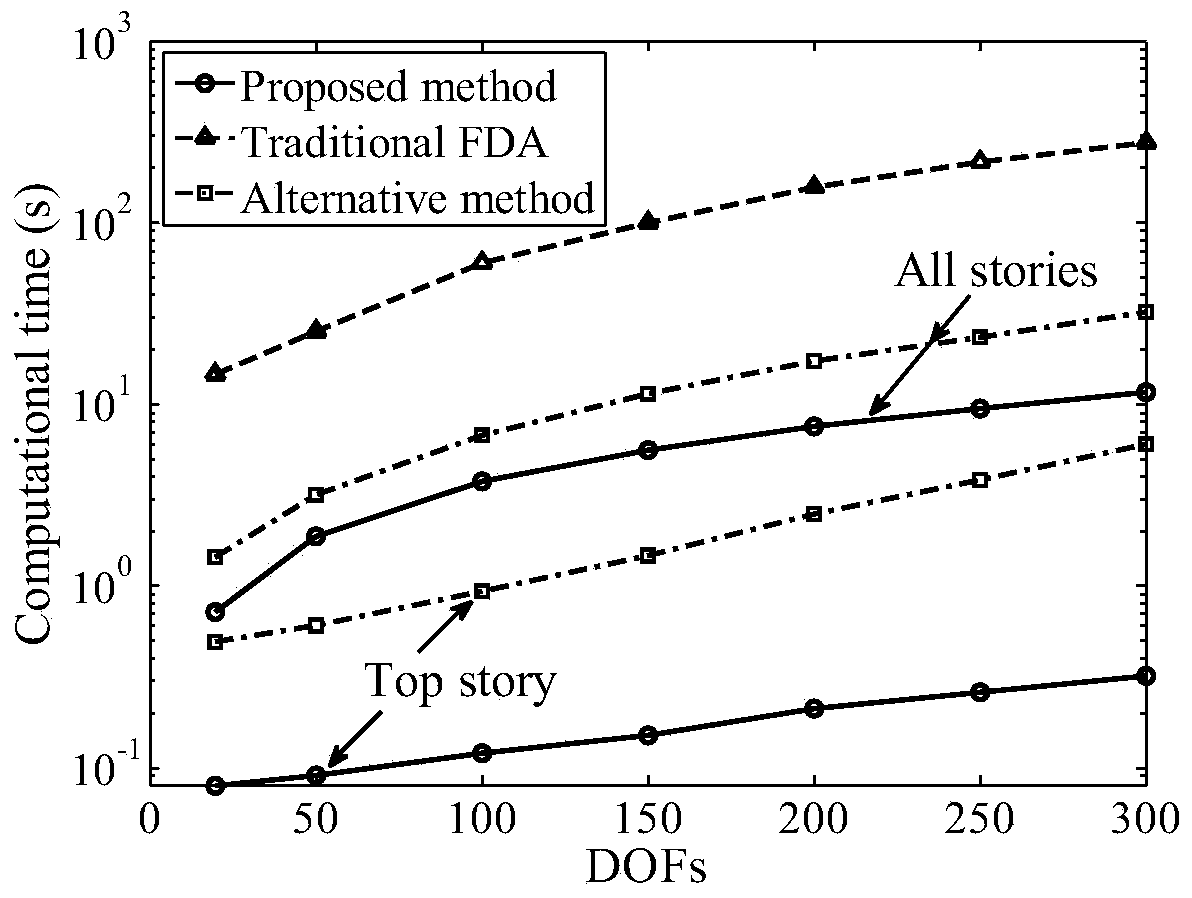Method for analyzing random response of non-proportional damping structure under earthquake action
A random response, damping structure technology, used in special data processing applications, instruments, electrical digital data processing, etc.
- Summary
- Abstract
- Description
- Claims
- Application Information
AI Technical Summary
Problems solved by technology
Method used
Image
Examples
example 1
[0087] Example 1: Linear structures for response analysis of tall buildings excited by earthquakes.
[0088] Consider a 20-story non-proportional damped building structure under earthquake action, its simplified model is as follows figure 1 shown. The structure parameter is m i = 10000kg and k i =16000kN / m (1≤i≤20). Its equation of motion is given as follows:
[0089]
[0090] Where: M=diag[m i ]; K = diag[k i ]; is the seismic acceleration process; E is the unit vector. Assume the damping matrix of the structure is C=C s +C r , where C s =0.3M+0.002K, C r (1,1)=20×C s (1,1), C r All other elements are 0.
[0091] Assumed earthquake acceleration process is a non-stationary random process, and its EPSD is given as
[0092]
[0093] In the formula: f is the Hertz frequency; S 0 =1 / 690m 2 the s -3 ; c=2; d=0.2. In order to evaluate the accuracy and efficiency of the fast convolution method, the response of the structure under this completely non-statio...
example 2
[0096] Example 2: Nonlinear structure for response analysis of delayed systems subjected to earthquakes.
[0097] Consider one such as Figure 4 The 100 degrees of freedom hysteresis system shown. The lumped mass of each layer of the system and the initial linear stiffness between layers are m i = 3000kg and k i =8×10 7 N / m(1≤i≤50), m i = 2500kg and k i =7.5×10 7 N / m (51≤i≤100). The stiffness reduction factor of each layer is γ i =0.6 (1≤i≤100). The parameter of the hysteresis displacement of each layer is φ i = 1, beta i =300m -1 and θ i =1 (1≤i≤100). The damping matrix C is defined by the Rayleigh damping model, and its proportional coefficient is determined by the damping ratio of the first mode and the 100th mode of the initial linear system as 0.05. The system is excited by a non-stationary ground acceleration Its EPSD is defined by the formula, where S 0 =0.02m 2 the s -3 . In the response calculation, the cut-off frequency is selected as 8Hz, and t...
PUM
 Login to View More
Login to View More Abstract
Description
Claims
Application Information
 Login to View More
Login to View More - R&D
- Intellectual Property
- Life Sciences
- Materials
- Tech Scout
- Unparalleled Data Quality
- Higher Quality Content
- 60% Fewer Hallucinations
Browse by: Latest US Patents, China's latest patents, Technical Efficacy Thesaurus, Application Domain, Technology Topic, Popular Technical Reports.
© 2025 PatSnap. All rights reserved.Legal|Privacy policy|Modern Slavery Act Transparency Statement|Sitemap|About US| Contact US: help@patsnap.com



